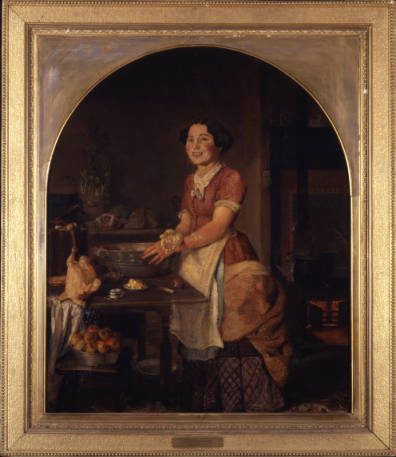Welcome to Our Summer Interns!
Meet Grayson and Grace—two of our outstanding summer interns at the Ohio History Connection!
Making a career as an artist in the mid-1800s United States was difficult. Making a career of as an artist in the mid-1800s as a woman was nearly impossible. Female artists faced harsh criticism from art critics, fellow artists, and the general public. Despite these obstacles, Lilly Martin Spencer (1822-1902) supported her husband and thirteen children by selling her paintings, lithographs, and sketches. Beginning as a young girl painting on the walls of her parents’ home in Marietta, Ohio, Spencer’s growing art career took her from her hometown to Cincinnati, Ohio, and eventually, New York City. She became one of the most famous painters in the 1800s through her scenes of home life and, most notably, her masterpiece, Shake Hands? Lilly Martin Spencer grew into a business-minded artist, which gave her family financial stability and cemented her place in American art history. An active painter until her death in 1902, Spencer’s moral improvement messages continue to connect to modern audiences.

Lilly Martin Spencer created Shake Hands? in 1854. The painting shows a woman standing over a table in the kitchen. She is wearing a red, yellow and gray dress with a white apron; her hair is black, her checks are rosy and she is smiling. On the table in front of her is a large gray pail that her left hand is resting on; her right arm is crossed over her left arm and her right hand is outstretched with the palm up. On the table, there is also a chicken and several dishes filled with food; sitting on the chair in front of the table is a bucket of apples.
Listed incorrectly on the plaque as The Cook by Lilley M. Spencer, Shake Hands? (1854) is one of Lilly Martin Spencer’s best known pieces, though the meaning of the painting is still debated today. Perhaps unintentionally, it is unclear whether the woman depicted is a housemaid or a middle-class wife, which could drastically change the humor behind the painting. Is she mocking upper class social etiquette or laughing at her own thoughtlessness? As art historian April Masten describes, “These readings makes a ‘moral’ point about exclusion, but one is asocial and the other a political joke.” While Spencer’s message is unknown, Shake Hands? has been reproduced in hundreds of thousands of magazines, prints, and newspapers across the country. Its popularity has resulted from these reproductions and exhibitions around the world, and ensured her legacy as a leading genre painting artist.
Shake Hands?( H 24655) was purchased by the Ohio History Connection in 1951, becoming one of the most recognizable pieces in the fine art collection. The painting has been featured in exhibitions around the world, including the recent Art and Appetite exhibition at the Art Institute of Chicago.
Come see this masterpiece in Power of Painting:Lilly Martin Spencer now on exhibit at the Ohio History Center and join curator Emily Lang for a tour of the exhibition June 13 at 2 pm.